
Crop Yield Increase With Precision Technologies
Throughout the existence of agriculture, one of the main issues of interest to farmers was the issue of increasing crop yield. What are the best ways to increase crop yield per acre? What are the factors that affect crop yield most? Recently, in view of the constant growth of the world’s population, this issue is becoming more and more relevant. However, with the emergence of new challenges for agrarians, there are also new ways and technologies appearing that are called to respond to them. This is what this article is about: what growers can do for increasing crop yield on their farmlands and what new technologies can help farmers in this matter.
What Is Crop Yield And Why Is It Important?
Crop yield is the measure of seeds or grains which is produced from a given land plot. It is usually expressed in kilograms per hectare or in bushels per acre. Such an indicator as the average crop yield per acre serves as the evaluation of a farmer’s agricultural output on a particular field over a specified time period. It is considered to be probably the most important measure of each farmer’s performance, as it embodies the result of all the efforts and resources invested by agrarians in the development of plants on their fields. Given this, no wonder that most farmers find themselves in a constant quest called “How to increase the average crop yield per acre?”.
Let’s see what are the main factors that affect crop yield and what are the most efficient and up-to-date solutions and technologies that can help farmers achieve better yields on their fields.
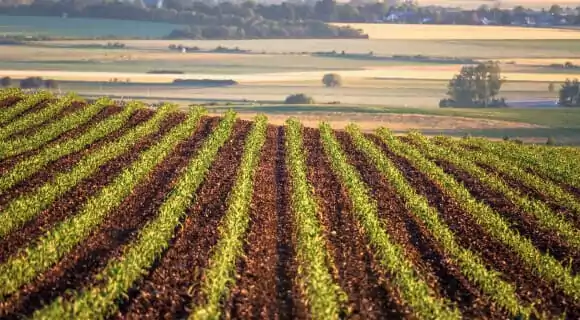
What Are The Ways To Increase Crop Yield?
For centuries, farmers have pondered over and worked on the issue of increasing crop yields. Some of the solutions found were efficient and some were not. Today, in addition to the valuable experience of previous generations of farmers, the agriculture industry can also benefit from the achievements of modern science and technology. Let’s now look at the main ways for the farmers to increase crop yields and see how previous experience and advanced technology can be effectively combined to improve agrarians’ performance.
Quality Of Seeds
Agricultural productivity depends on the quality of seeds with which farmers sow their fields. Therefore, in order to increase crop yield on their farmlands, agrarians are recommended to sow only certified seeds that have passed all the necessary quality controls. Certified seeds may cost higher than those that do not have certification, but the result will be worth it, because the proper quality of seeds is one of the main factors that affect crop yield. Besides that, planting only high-quality seeds represents one of the eco friendly methods to increase crop yield. If needed, a farmer can check the quality of particular seeds by referring to a relevant seed company and requesting it to conduct special trials on a given land plot.
Apart from this, is it important to remember that the quality of seeds is not something that is permanent and undamageable. Seed grains need protection from the moment they are planted in the ground. Seed coating is one of the seed treatment techniques used to accomplish this. It is the process of protecting seed grains with outer materials in order to improve their characteristics (weight, size) and/or provide them with some active compounds (micronutrients, microbial inoculants, growth regulators, etc.) called to protect them against plant diseases and boost their growth.
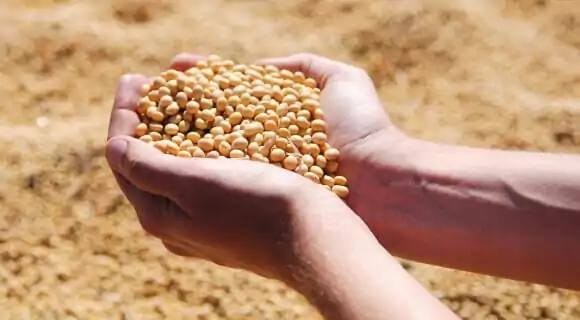
Field Productivity Zoning
Before sowing, it is important for a farmer to understand productivity of the field that is to be sowed and, if applicable, define specific areas where plants grow better. >This process is called variable rate application. In this way, a grower can plant seeds more densely in the areas with greater productivity, potentially getting increased crop yield, and do not waste them much in the zones with low productivity. Also, such zoning allows farmers to properly treat the field areas with lower productivity and take all necessary actions to increase soil fertility and its overall important characteristics to grow a particular plant.
Today’s technologies allow farmers to carry out such productivity zoning of their fields faster and more efficiently than before. For this purpose many agrarians use crop monitoring solutions, such as EOSDA Crop Monitoring. With its high-precision technology and satellite-driven data, the growers can generate field productivity maps based on the historical data and, thus, clearly identify the areas with the highest and the lowest productivity on a given farmland.
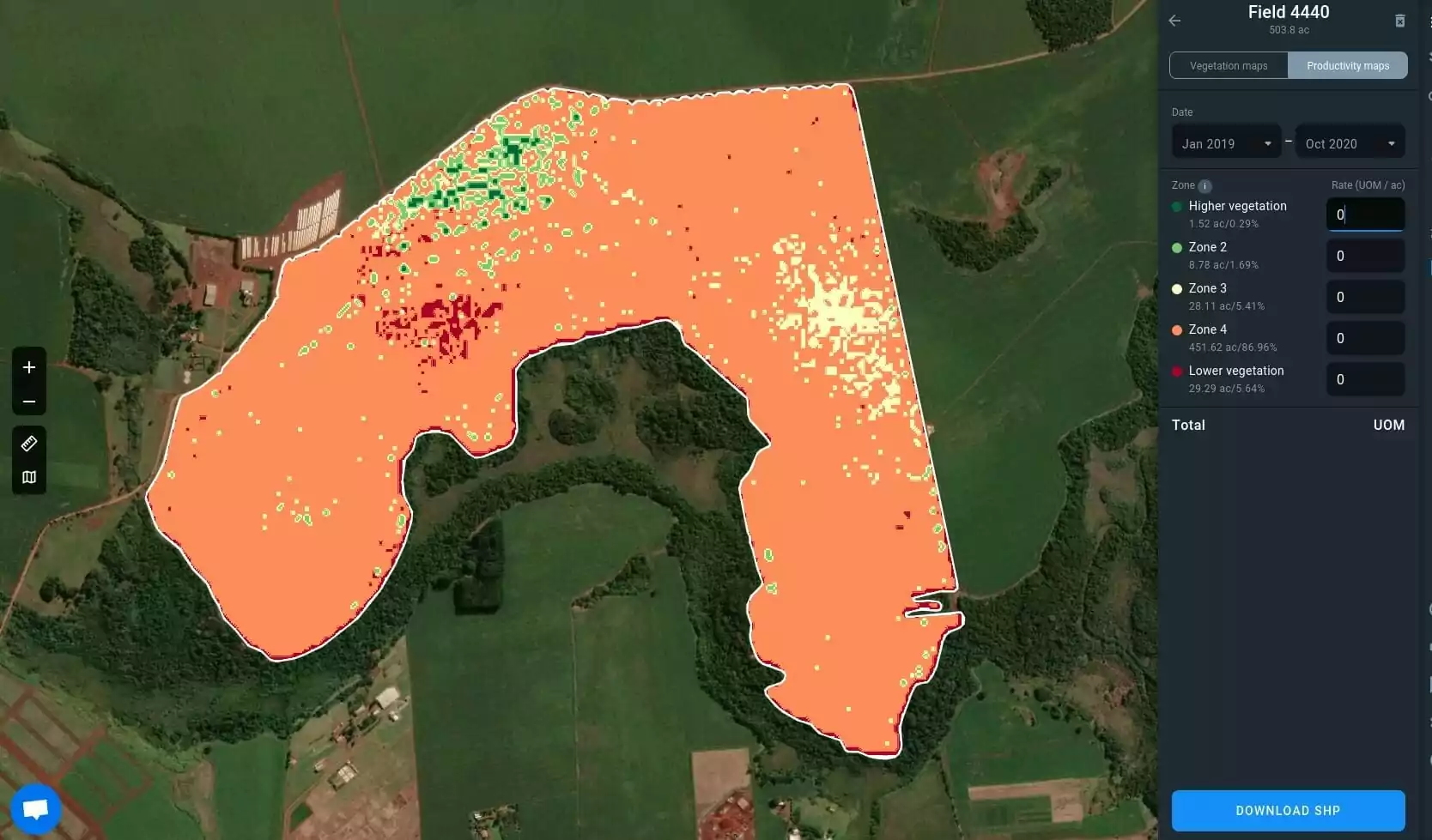
Monitoring Crops Growth
From the early stage of development through budding and up to harvesting, it is very important to monitor plant health in order to timely detect any problem that can arise on a given farmland (be it related to pest infestations, plant diseases, weeds, etc.) and that can affect the crop yield.
Regular satellite monitoring of land plots, for instance, allows farmers to easily follow the growth status of plants and carry out crop yield estimation using remote sensing. The evolution of plant health status provides key information to decide on possible interventions to the needs of crops.
Even though satellites do not measure the stages of plant growth directly, but with spectral indices. EOSDA Crop Monitoring also provides data on daily temperatures, analyze their dynamics in time, and calculate their total sum. Based on this data, software is capable of detecting stages of plant growth for various types of plants and represents their correlations with other data so that the farmers could make well-weighted decisions.
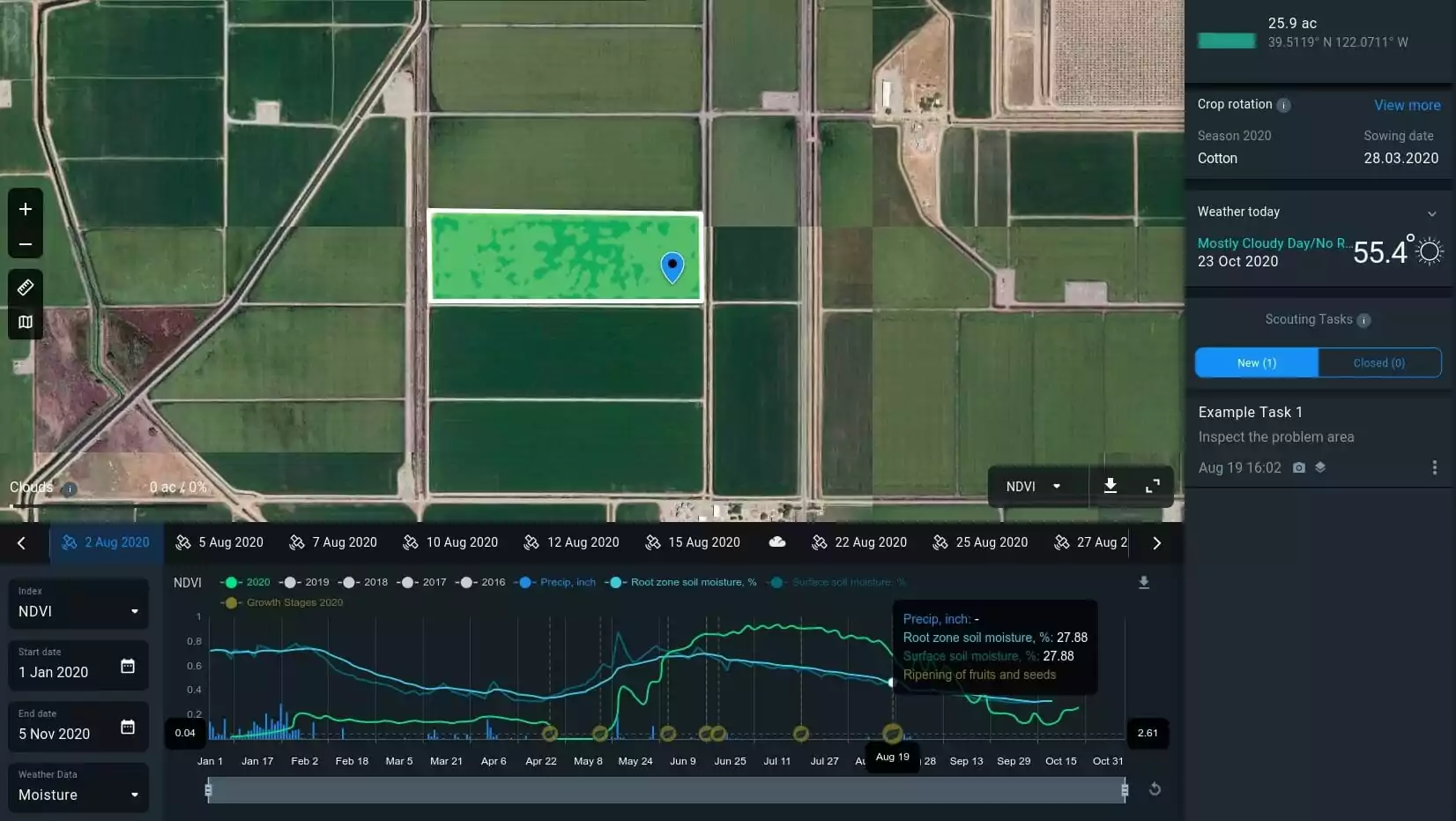
Apart from this, EOSDA Crop Monitoring provides agrarians with valuable data about different vegetation indices, such as:
- NDVI – Normalized Difference Vegetation Index (recommended during the active stages of crop growth);
- MSAVI – Modified Soil Adjusted Vegetation Index (it is best to be used at the early stages of crop growth);
- NDRE – Normalized Difference Red Edge Index (recommended to be used together with the NDVI index);
- ReCl – Red Edge Chlorophyll (most relevant during early and active growth stages of crop growth).
EOSDA Crop Monitoring
Access high-resolution satellite images to ensure effective fields management!
Accurate Weather Prediction
The average crop yield per acre on a given field is very much conditioned by weather factors. With the same quality of soil and the same species of seeds planted, the climate conditions have a predominant influence on the development of plants and, consequently, on yields. It is especially true when considering how climate change affects agriculture in separate regions and on Earth in general. To work efficiently and cooperatively with such an important but uncontrollable factor as weather, farmers have an opportunity to refer to the newest technological solutions in agriculture that help them obtain accurate weather prediction.
For example, the use of EOSDA Crop Monitoring software in precision farming gives agrarians a possibility to take preventive measures as to protecting their crop yield from possible damages caused by weather extremes. High-precision weather forecasts can help growers decide what ag practices they can perform. Given all this, it is worth noting that accurate weather forecasting in precision farming can greatly contribute to increasing crop yields on a particular farmland.
EOSDA Crop Monitoring provides farmers with weather analytics that include current and historical weather data, as well as forecasts up to two weeks ahead. Also, this software allows agrarians to detect the extreme weather states that can affect crop yields:
- cold stress
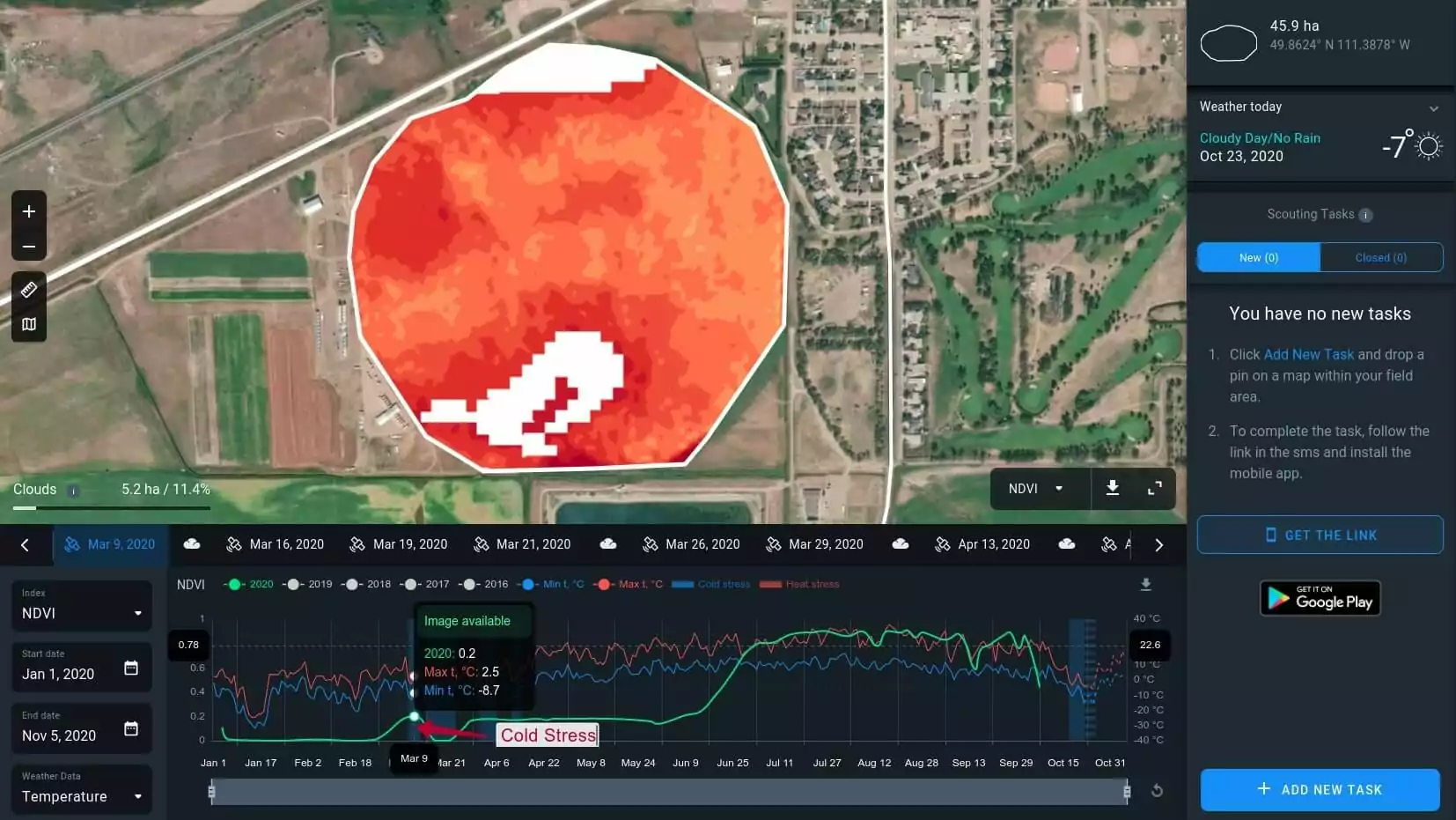
- heat stress
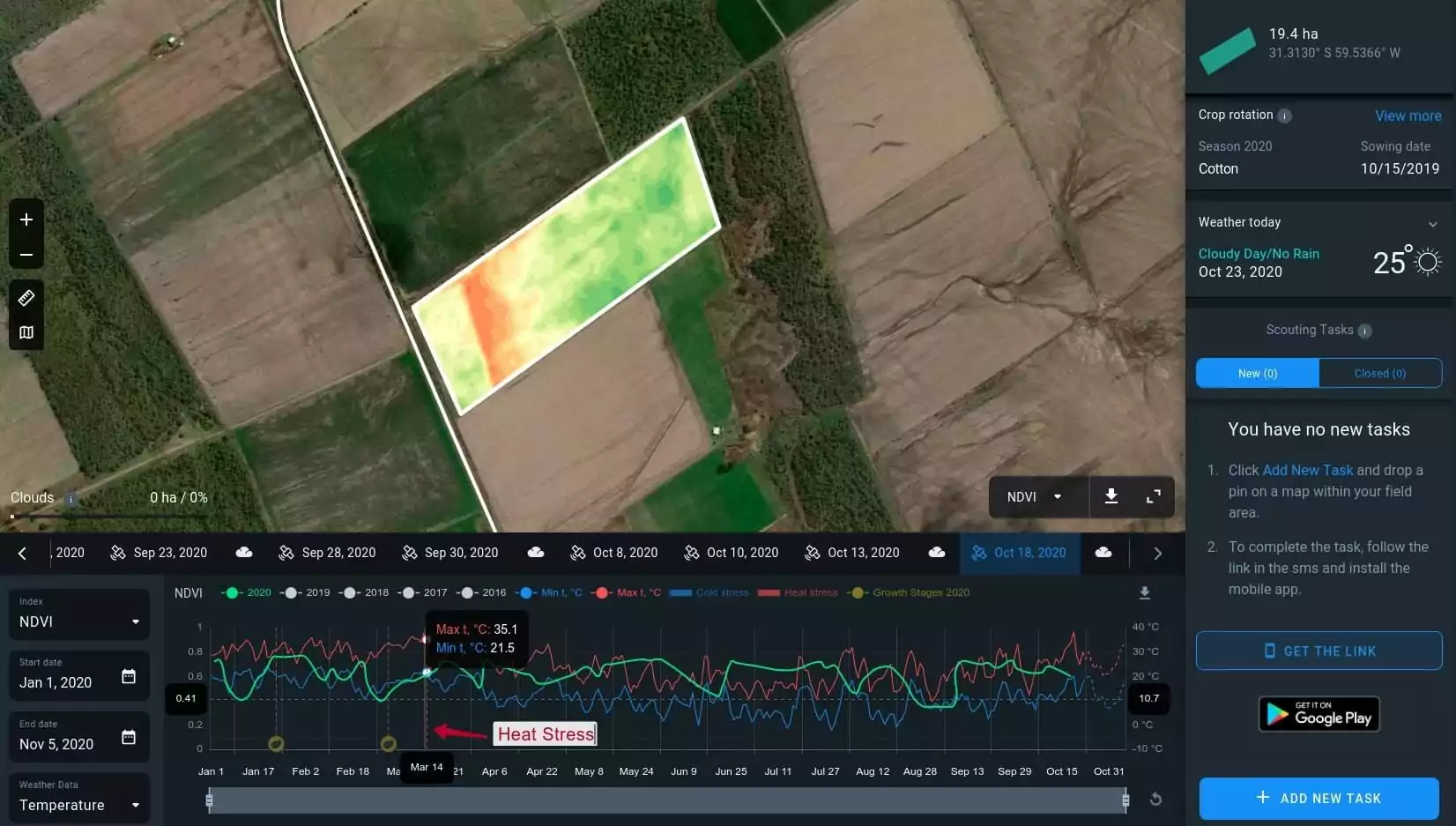
Regular Scouting
Scouting is one of the important parts of agribusiness management aimed to ensure proper development of plants and increase crop yields. Often, when a grower has large fields, it is difficult and non-effective to scout acre by acre, as it is time-consuming and resource-intensive.
EOSDA Crop Monitoring takes advantage here and offers convenient scouting task management. Crop Scouting solution is intended to save time and replace a tedious work of human experts on fields. All that is needed to do is to log into your Crop Scouting app, check for any problem areas on your land plot detected by a satellite, tag these areas on the map, and organize closer scouting of these specific zones.
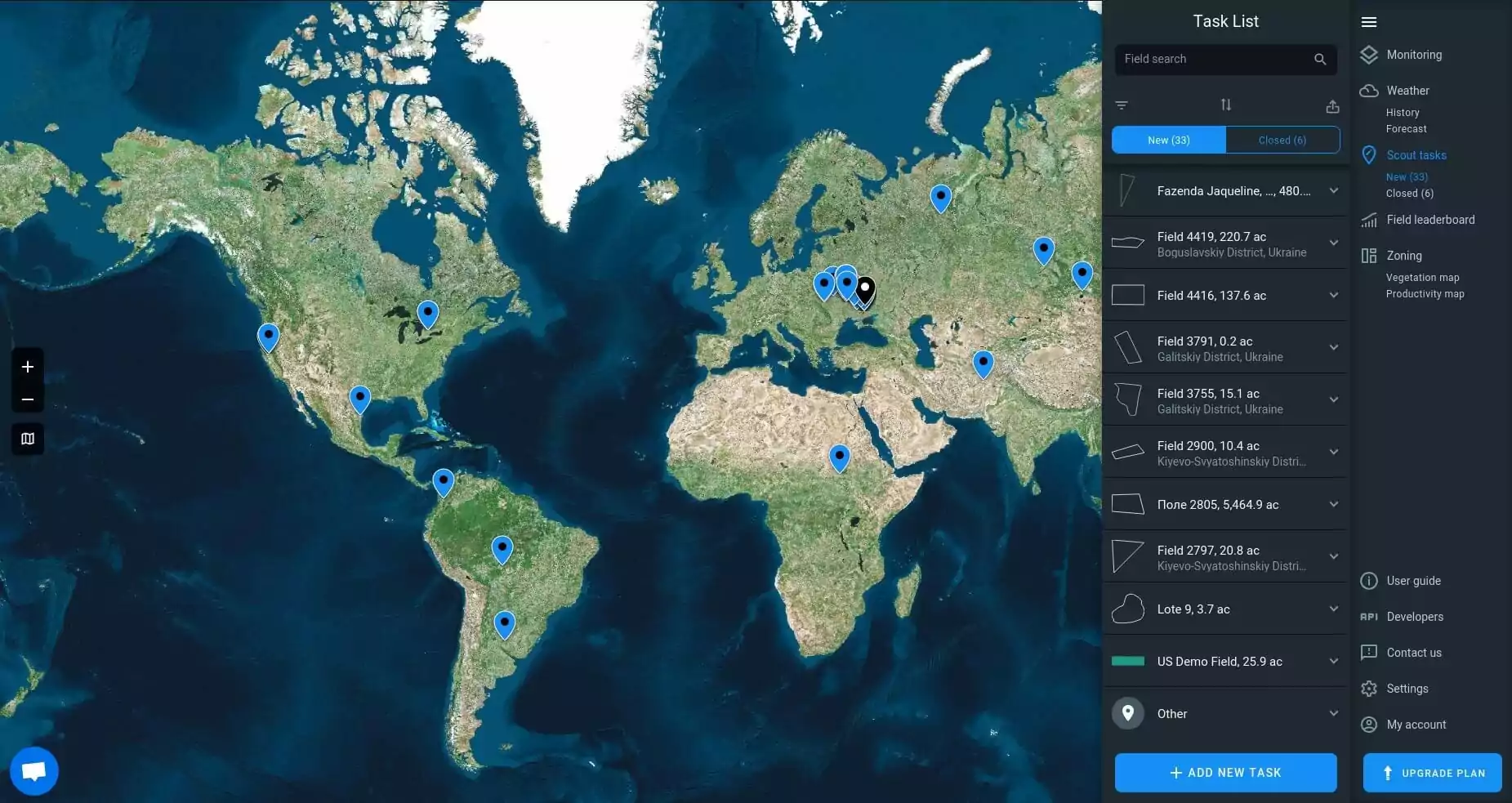
The scouts then proceed to problem investigation on the spot, make pictures, upload them in the application, and enter necessary data in the relevant section. This way, a farmer can create multiple scouting tasks simultaneously, easily managing them and monitoring their completion. Such time-effective and highly accurate field scouting solution assists agrarians in their daily work and can help increase their yields.
Proper Irrigation
Farmers who aim to increase an average crop yield per acre on their fields must have a streamlined irrigation system at hand. Providing the plants with the appropriate amount of water directly affects the development of plants and, consequently, the crop yields. Effective irrigation of farmlands is closely linked to weather forecasts. Today’s technologies – special applications and software for farmers – provide access to hyper-local weather forecasting. It opens the door for precision irrigation and allows agrarians to plan in advance and organize irrigation of their fields in the most accurate and efficient manner.
Smart Application Of Fertilizers
Although fertilizers are intended to nourish the various types of soil, boost plant growth, and increase yields, their use should be balanced and prudent. Using too much fertilizers can negatively affect the soil quality and, therefore, the agricultural productivity. Within one field, different areas may have different needs for soil fertilization, which is why the best solution here is to use fertilizers selectively, depending on the need for them in different field zones. This accurate approach to field fertilization helps keep the soil in good health, which helps increase the average crop yield per acre.
One of the technological solutions in this context is EOSDA Crop Monitoring software. Based on satellite imagery, it has a field zoning feature which divides a farmland on 2-7 zones, identifying the areas that require more care than others. Such precision technology is often used by growers as one of the eco friendly methods to increase crop yield.
Crop Protection Methods
Agrarians aiming to increase crop yields must take care of their plants throughout their development and up the end of the growing season. Depending on the problem that may arise, farmers use different substances to diminish the impact of weeds, pests or diseases on crop yield. Such substances are usually herbicides, insecticides, desiccants, plant growth regulators, fungicides, adjuvants, etc.
In general, there are various crop protection methods. Among the main ones are weed/pest management and plant disease management.
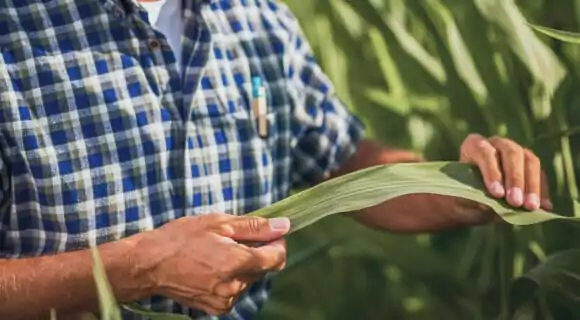
Weed And Pest Management
Weed control and pest management are the biggest challenges for farmers during the growing season. A single weed, for example, can generate over 10 million weed seeds, and if they are not managed in time, it can substantially decrease the yields on a given field and create problems for years to come.
Pest infestations also require a comprehensive management approach from agrarians. As pests are highly adaptable and fast-reproducing organisms that can threaten the yield on a particular farmland, farmers must always be ready to respond to the pest infestation issue in a timely manner.
Plant Disease Prevention And Management
Another important threat to a grower’s agricultural output is represented by plant diseases. Depending on the type of plants to be grown on a field, farmers can use various plant disease prevention and management methods, like selecting disease resistant or disease tolerant varieties, treating seeds with fungicides, and applying pesticides, and other similar substances on developing plants. Agrarians should pay special attention to using these or other methods in time so that they have a maximum effect possible.
It is very important to remember that protecting plants in a timely manner is crucial for crop yield per acre indicator – the sooner a problem is identified, the faster and easier it will be solved and the fewer field acres will be affected.
Soil Testing & Its Quality
The quality of soil, i.e. its fertility, is one of the main factors that affect crop yields. Apart from agricultural productivity, the soil quality also influences the cost for a farmer to grow one or another plant, as some of them require certain ratios of specific elements in the soil, like mineral particles, organic matter, water, air, etc. To attain increased crop yields, farmers need to closely monitor soil conditions on their land plots. One of the best ways to maintain the soil in good health is to practice crop rotation, among others. Alternating plants on a given field plot prevents soil exhaustion and breaks pest cycles, which will result in better agricultural output and, therefore, will increase the average crop yield per acre.

Forecasting Crop Yield
Crop yield prediction is very important for global production of food. Governments all over the world use analytical data concerning crop yields forecasting to take grounded decisions as to their national import/export operations. Companies specialized in seed breeding need to foresee how new hybrids will perform in different climate and soil conditions to plan on further improvement of new variations of seeds. Farmers, in their turn, take advantage of crop yield prediction to make well-weighted agribusiness decisions.
One of the latest trends in industrial agriculture is predicting crop yield with remote sensing satellite data, which has already been proved efficient in different corners of the globe. It is important to note, however, that the accuracy in crop yield estimation using remote sensing depends on multiple factors, such as climate conditions (weather extremes), soil health, pest infestations, etc. Besides that, an important decision-making role in agricultural risk management and crop yield prediction is played by reliable historic records on yields in a given field.
At present time, various machine learning techniques for prediction of crop yield are used all over the world. Crop yield prediction software requires big amounts of input data, yet may sometimes be not fully accurate due to possible fluctuations in weather conditions, for example.
Smart Combination Of Agricultural Efforts
Taking into account all the above, it could be said that there is no single and universal method of increasing an average crop yield per acre on a farmer’s land plot. In most cases, it is a smart combination of different agricultural efforts that can vary depending on unique characteristics of a grower’s field. It is yet worth noting that the EOSDA Crop Monitoring software can be of considerable help for farmers with most of such agricultural efforts, assisting them whether directly or indirectly through accurate monitoring of separate agricultural activities and substantial facilitation of their implementation.
About the author:
Vasyl Cherlinka is a Doctor of Biosciences specializing in pedology (soil science), with 30 years of experience in the field. He attended the engineering college in Ukraine and received his degree in agrochemistry, agronomy and soil science in the Chernivtsi National University. Since 2018, Dr. Cherlinka has been advising EOSDA on problems in soil science, agronomy, and agrochemistry.
Recent articles
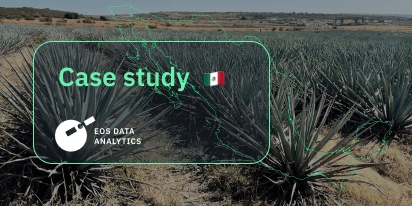
Digital Tools Improve Soil Health And Yields In Mexico
EOSDA and ITTA supported a Guanajuato farm with contour-line planning, monitoring tools, and practical guidance to reduce soil erosion and improve yields in the long run.

Analyze 2025 & Plan Your Best Year Yet: LandViewer Christmas Offer
It’s the most wonderful time of the year! The Christmas holidays are here, and so is your chance to analyze 2025 and plan a prosperous 2026 with more affordable Pro plans in LandViewer.

EOSDA Models Climate Change Impact On Sugarcane Yields
EOSDA modeled future temperature, rainfall, and other climate impacts on Veracruz sugarcane. The results help growers plan long-term adaptation strategies, including timing, varieties, and irrigation.